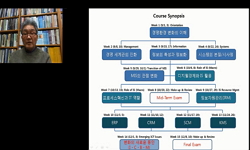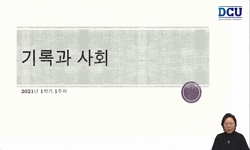메타데이터 표준규격(이하 메타데이터 표준으로 기재)은 디지털 자원(Digital resource)의 장기보존 및 디지털 아카이브를 위해 필요한 기본 요소 중 하나로, 이는 현대 정보사회에서 중요한 요...
http://chineseinput.net/에서 pinyin(병음)방식으로 중국어를 변환할 수 있습니다.
변환된 중국어를 복사하여 사용하시면 됩니다.
- 中文 을 입력하시려면 zhongwen을 입력하시고 space를누르시면됩니다.
- 北京 을 입력하시려면 beijing을 입력하시고 space를 누르시면 됩니다.

메타데이터 상호운용성을 위한 2. 기록관리 메타데이터 표준 분석 - 5W1H와 태스크 모델의 관점에서 = Analysis of Metadata Standards of Record Management for Metadata Interoperability - From the viewpoint of the Task model and 5W1H
한글로보기https://www.riss.kr/link?id=A103795706
- 저자
- 발행기관
- 학술지명
- 권호사항
-
발행연도
2012
-
작성언어
Korean
-
주제어
Archive ; Archival Metadata ; Digital Resource ; Metadata Interoperability ; Metadata Schema ; Metadata Standard ; Preservation Metadata ; Records ; Recordkeeping ; Records Lifecycle ; Record Management ; Task Model ; 5W1H Model ; 5W1H Categories ; 기록물 ; 기록관리 ; 기록 생애 주기 ; 디지털 리소스 ; 디지털 자원 ; 레코드 키핑 ; 메타데이터 스키마 ; 메타데이터
-
등재정보
KCI등재
-
자료형태
학술저널
- 발행기관 URL
-
수록면
127-176(50쪽)
-
KCI 피인용횟수
2
- 제공처
- 소장기관
-
0
상세조회 -
0
다운로드
부가정보
국문 초록 (Abstract)
자원(Resource)의 기록관리와 아카이브, 장기보존을 위한 메타데이터 표준은 다양하며, AGRkMS, AGRkMs(Australian Government Recordkeeping Metadata Standard)는 기록(records)과 기록물이 가지고 있고, 사용하고 있는 문맥들(contexts)에 대한 정보를 기술한다. 오스트레일리아 국가기록원(The National Archives)이 권장하는 이 정보는 기록을 작성하고 수집하는 오스트레일리아 정부기관에 의해 사용되는 비지니스 기능 안에서 파일 화 된다. 또한 이 표준은 기록(records)을 위한 메타데이터(ISO 23081)와 기록 관리(ISO 15489)안에서 오스트레일리아의 표준에 준수한다.
EAD, EAD(Encoded Archival Description)는 기록검색도구에서 넓은 범위 내에 상호관계가 있는 기술 정보를 발견한다. 또한 EAD는 기술의 레벨 사이에서 존재하는 계층에 따른 관계를 나타내고, 계층 정보의 구조 내에서의 이동과 요소의 특정한 색인 작성과 검색을 지지하며 ISAD(G)와의 호환성을 유지하고 있다.
ISAD(G), ISAD(G)(General International Standard Archival Description)는 ICA(International Council on Archives)가 승인한 보존 기록 자료(Archival records)의 목록 기술의 국제표준이다. 이 표준은 보존기록 기술(Archival descriptions)의 준비를 위한 일반적인 안내를 제공하고 있다. 또한 이는 국가 표준의 개발을 위한 기초로서, 기존의 국가 표준과 함께 사용된다.
OAIS, OAIS(Open Archival Information System)는CCSD(Consultative Committee for Space Data Systems)에 의해 책정된 것으로, OAIS의 참조 모델은 장기간에 걸쳐서 디지털 정보에의 접근(access)을 유지하고 보존하는 데 전념하는 기록보존 시스템을 위한 개념적인 프레임워크이다. 참조 모델은 디지털 오브젝트를 아카이브 하기 위해 적절한 개념의 이해와 인식을 높이는 것을 목적으로 하고 있다(Brian Lavoie, 2000).
PREMIS PREMIS(Preservation Metadata: Implementation Strategies)는 OCLC(OCLC and RLG)와 RLG(Research Libraries Group)에 의해 설립된 PREMIS Working group에서 작성된 것으로, 데이터 사전을 가지고 있다. 데이터사전은 데이터베이스 안의 데이터 항목 혹은 의미를 등록, 정의한 사전이다. 데이터사전은 OAIS 참조모델(ISO 14721)을 기초로 하고 있고, 보존 메타데이터(preservation metadata)를, 디지털 보존과정을 지지하기 위해 저장소가 사용하는 정보로 정의되고 있다.
등이 이용되고 있다. 우리는 아카이브 시스템의 메타데이터 표준을 디자인하기 위해 목적에 따른 메타데이터 표준을 선택하고 맞춤화(Customization)하지 않으면 안 된다. 한편으로, 다른 시스템의 메타데이터 스키마와의 상호운용성(Interoperability) 상호운용성(Interoperability)은 메타데이터 실행에서 가장 중요한 원리 중 하나이다. 상호운용성은 하나 혹은 그 이상의 시스템 혹은 구성 요소로부터 각각의 시스템의 특별한 기능 없이 정보를 교환하고, 교환된 정보를 이용하도록 하는 기능이다(CC:DA, 2000).
에 대한 고찰도 실시하지 않으면 안 된다.
이전 연구에서, 우리는 기록 생애 주기(Records lifecycle)라는 관점으로부터 메타데이터 표준의 특성에 대해 분석을 실시하였다. 이로 인해, 각 메타데이터 표준 요소가 해당하는 기록 생애 주기의 처음 단계를 확인할 수 있었고, 아카이브 혹은 보존을 위해서는 하나의 메타데이터 표준만으로 기록 생애 주...
메타데이터 표준규격(이하 메타데이터 표준으로 기재)은 디지털 자원(Digital resource)의 장기보존 및 디지털 아카이브를 위해 필요한 기본 요소 중 하나로, 이는 현대 정보사회에서 중요한 요소로 잘 알려져 있다.
자원(Resource)의 기록관리와 아카이브, 장기보존을 위한 메타데이터 표준은 다양하며, AGRkMS, AGRkMs(Australian Government Recordkeeping Metadata Standard)는 기록(records)과 기록물이 가지고 있고, 사용하고 있는 문맥들(contexts)에 대한 정보를 기술한다. 오스트레일리아 국가기록원(The National Archives)이 권장하는 이 정보는 기록을 작성하고 수집하는 오스트레일리아 정부기관에 의해 사용되는 비지니스 기능 안에서 파일 화 된다. 또한 이 표준은 기록(records)을 위한 메타데이터(ISO 23081)와 기록 관리(ISO 15489)안에서 오스트레일리아의 표준에 준수한다.
EAD, EAD(Encoded Archival Description)는 기록검색도구에서 넓은 범위 내에 상호관계가 있는 기술 정보를 발견한다. 또한 EAD는 기술의 레벨 사이에서 존재하는 계층에 따른 관계를 나타내고, 계층 정보의 구조 내에서의 이동과 요소의 특정한 색인 작성과 검색을 지지하며 ISAD(G)와의 호환성을 유지하고 있다.
ISAD(G), ISAD(G)(General International Standard Archival Description)는 ICA(International Council on Archives)가 승인한 보존 기록 자료(Archival records)의 목록 기술의 국제표준이다. 이 표준은 보존기록 기술(Archival descriptions)의 준비를 위한 일반적인 안내를 제공하고 있다. 또한 이는 국가 표준의 개발을 위한 기초로서, 기존의 국가 표준과 함께 사용된다.
OAIS, OAIS(Open Archival Information System)는CCSD(Consultative Committee for Space Data Systems)에 의해 책정된 것으로, OAIS의 참조 모델은 장기간에 걸쳐서 디지털 정보에의 접근(access)을 유지하고 보존하는 데 전념하는 기록보존 시스템을 위한 개념적인 프레임워크이다. 참조 모델은 디지털 오브젝트를 아카이브 하기 위해 적절한 개념의 이해와 인식을 높이는 것을 목적으로 하고 있다(Brian Lavoie, 2000).
PREMIS PREMIS(Preservation Metadata: Implementation Strategies)는 OCLC(OCLC and RLG)와 RLG(Research Libraries Group)에 의해 설립된 PREMIS Working group에서 작성된 것으로, 데이터 사전을 가지고 있다. 데이터사전은 데이터베이스 안의 데이터 항목 혹은 의미를 등록, 정의한 사전이다. 데이터사전은 OAIS 참조모델(ISO 14721)을 기초로 하고 있고, 보존 메타데이터(preservation metadata)를, 디지털 보존과정을 지지하기 위해 저장소가 사용하는 정보로 정의되고 있다.
등이 이용되고 있다. 우리는 아카이브 시스템의 메타데이터 표준을 디자인하기 위해 목적에 따른 메타데이터 표준을 선택하고 맞춤화(Customization)하지 않으면 안 된다. 한편으로, 다른 시스템의 메타데이터 스키마와의 상호운용성(Interoperability) 상호운용성(Interoperability)은 메타데이터 실행에서 가장 중요한 원리 중 하나이다. 상호운용성은 하나 혹은 그 이상의 시스템 혹은 구성 요소로부터 각각의 시스템의 특별한 기능 없이 정보를 교환하고, 교환된 정보를 이용하도록 하는 기능이다(CC:DA, 2000).
에 대한 고찰도 실시하지 않으면 안 된다.
이전 연구에서, 우리는 기록 생애 주기(Records lifecycle)라는 관점으로부터 메타데이터 표준의 특성에 대해 분석을 실시하였다. 이로 인해, 각 메타데이터 표준 요소가 해당하는 기록 생애 주기의 처음 단계를 확인할 수 있었고, 아카이브 혹은 보존을 위해서는 하나의 메타데이터 표준만으로 기록 생애 주...
다국어 초록 (Multilingual Abstract)
In our previous research, we have presented a feature analysis of metadata standards by identifying the primary resource lifecycle stages where each standard is applied. We have clarified that any single metadata standard cannot cover the whole records lifecycle for archiving and preservation.
Through this feature analysis, we analyzed the features of metadata in the whole records lifecycle, and we clarified the relationships between the metadata standards and the stages of the lifecycle. In the previous study, more detailed analysis was left for future study. This paper proposes to analyze the metadata schemas from the viewpoint of tasks performed in the lifecycle. Metadata schemas are primarily defined to describe properties of a resource in accordance with the purposes of description, e.g. finding aids, records management, preservation and so forth. In other words, the metadata standards are resource- and purpose-centric, and the resource lifecycle is not explicitly reflected in the standards. There are no systematic methods for mapping between different metadata standards in accordance with the lifecycle.
This paper proposes a method for mapping between metadata standards based on the tasks contained in the resource lifecycle. We first propose a Task Model to clarify tasks applied to resources in each stage of the lifecycle. This model is created as a task-centric model to identify features of metadata standards and to create mappings among elements of those standards. It is important to categorize the elements in order to limit the semantic scope of mapping among elements and decrease the number of combinations of elements for mapping.
This paper proposes to use 5W1H (Who, What, Why, When, Where, How) model to categorize the elements. 5W1H categories are generally used for describing events, e.g. news articles. As performing a task on a resource causes an event and metadata elements are used in the event, we consider that the 5W1H categories are adequate to categorize the elements. By using these categories, we determine the features of every element of metadata standards which are AGLS, AGRkMS, PREMIS, EAD, OAIS and an attribute set extracted from DPC decision flow. Then, we perform the element mapping between the standards, and find the relationships between the standards.
In this study, we defined a set of terms for each of 5W1H categories, which typically appear in the definition of an element, and used those terms to categorize the elements. For example, if the definition of an element includes the terms such as person and organization that mean a subject which contribute to create, modify a resource the element is categorized into the Who category. A single element can be categorized into one or more 5W1H categories. Thus, we categorized every element of the metadata standards using the 5W1H model, and then, we carried out mapping among the elements in each category.
We conclude that the Task Model provides a new viewpoint for metadata schemas and is useful to help us understand the features of metadata standards for records management and archives. The 5W1H model, which is defined based on the Task Model, provides us a core set of categories to semantically classify metadata elements from the viewpoint of an event caused by a task.
Metadata is well recognized as one of the foundational factors in archiving and long-term preservation of digital resources. There are several metadata standards for records management, archives and preservation, e.g. ISAD(G), EAD, AGRkMs, PREMIS, and...
Metadata is well recognized as one of the foundational factors in archiving and long-term preservation of digital resources. There are several metadata standards for records management, archives and preservation, e.g. ISAD(G), EAD, AGRkMs, PREMIS, and OAIS. Consideration is important in selecting appropriate metadata standards in order to design metadata schema that meet the requirements of a particular archival system. Interoperability of metadata with other systems should be considered in schema design.
In our previous research, we have presented a feature analysis of metadata standards by identifying the primary resource lifecycle stages where each standard is applied. We have clarified that any single metadata standard cannot cover the whole records lifecycle for archiving and preservation.
Through this feature analysis, we analyzed the features of metadata in the whole records lifecycle, and we clarified the relationships between the metadata standards and the stages of the lifecycle. In the previous study, more detailed analysis was left for future study. This paper proposes to analyze the metadata schemas from the viewpoint of tasks performed in the lifecycle. Metadata schemas are primarily defined to describe properties of a resource in accordance with the purposes of description, e.g. finding aids, records management, preservation and so forth. In other words, the metadata standards are resource- and purpose-centric, and the resource lifecycle is not explicitly reflected in the standards. There are no systematic methods for mapping between different metadata standards in accordance with the lifecycle.
This paper proposes a method for mapping between metadata standards based on the tasks contained in the resource lifecycle. We first propose a Task Model to clarify tasks applied to resources in each stage of the lifecycle. This model is created as a task-centric model to identify features of metadata standards and to create mappings among elements of those standards. It is important to categorize the elements in order to limit the semantic scope of mapping among elements and decrease the number of combinations of elements for mapping.
This paper proposes to use 5W1H (Who, What, Why, When, Where, How) model to categorize the elements. 5W1H categories are generally used for describing events, e.g. news articles. As performing a task on a resource causes an event and metadata elements are used in the event, we consider that the 5W1H categories are adequate to categorize the elements. By using these categories, we determine the features of every element of metadata standards which are AGLS, AGRkMS, PREMIS, EAD, OAIS and an attribute set extracted from DPC decision flow. Then, we perform the element mapping between the standards, and find the relationships between the standards.
In this study, we defined a set of terms for each of 5W1H categories, which typically appear in the definition of an element, and used those terms to categorize the elements. For example, if the definition of an element includes the terms such as person and organization that mean a subject which contribute to create, modify a resource the element is categorized into the Who category. A single element can be categorized into one or more 5W1H categories. Thus, we categorized every element of the metadata standards using the 5W1H model, and then, we carried out mapping among the elements in each category.
We conclude that the Task Model provides a new viewpoint for metadata schemas and is useful to help us understand the features of metadata standards for records management and archives. The 5W1H model, which is defined based on the Task Model, provides us a core set of categories to semantically classify metadata elements from the viewpoint of an event caused by a task.
참고문헌 (Reference)
1 곽정, "현용ㆍ준현용 단계의 기록관리를 위한 메타데이터" 한국기록학회 (16호) : 3-37, 2007
2 日本総務省, "新ICT利活用サービス創出支援事業メタデータ情報基盤構築事業"
3 Library of Congress, "VRA Core 4.0"
4 Consultative Committee for Space Data Systems (CCSDS), "Reference Model for an Open Archival Information System (OAIS)"
5 Baca, Murtha, "Practical Issues in Applying Metadata Schemas and Controlled Vocabularies to Cultural Heritage Information" 36 (36): 47-55, 2003
6 "National Archives and Records Administration"
7 Day, Michael, "Metadata for Digital Preservation: A Review of Recent Developments" 2001
8 Harvard University Library, "Metadata Standards"
9 Chan, Lois Mai, "Metadata Interoperability and Standardization–A Study of Methodology Part 1. D-Lib Magazine"
10 Brian F Lavoie, "Meeting the challenges of digital preservation: The OAIS reference model"
1 곽정, "현용ㆍ준현용 단계의 기록관리를 위한 메타데이터" 한국기록학회 (16호) : 3-37, 2007
2 日本総務省, "新ICT利活用サービス創出支援事業メタデータ情報基盤構築事業"
3 Library of Congress, "VRA Core 4.0"
4 Consultative Committee for Space Data Systems (CCSDS), "Reference Model for an Open Archival Information System (OAIS)"
5 Baca, Murtha, "Practical Issues in Applying Metadata Schemas and Controlled Vocabularies to Cultural Heritage Information" 36 (36): 47-55, 2003
6 "National Archives and Records Administration"
7 Day, Michael, "Metadata for Digital Preservation: A Review of Recent Developments" 2001
8 Harvard University Library, "Metadata Standards"
9 Chan, Lois Mai, "Metadata Interoperability and Standardization–A Study of Methodology Part 1. D-Lib Magazine"
10 Brian F Lavoie, "Meeting the challenges of digital preservation: The OAIS reference model"
11 Zeng, Marcia Lei, "Matadata Elements for Object Description and Representation: A Case Report form a Digitized Historical Fashion Collection Project" 50 (50): 1999
12 Library of Congress, "MARC (MAchine-Readable Cataloging) Formats"
13 Shimazu, Keiko, "Interdisciplinary contents management using 5W1H interface for metadata" 909-912, 2006
14 International Organization for Standardization, "ISO 23081-2:2009: Information and documentation-managing metadata for records - Part 2: Conceptual and implementation issues"
15 International Organization for Standardization, "ISO 23081-1:2006: Information and documentation-Records management processes- Metadata for records- Part 1: Principles"
16 International Council on Archives, "ISAD(G): General International Standard Archival Description, Second edition"
17 백재은, "Feature Analysis of Metadata Schemas for Records Management and Archives from the Viewpoint of Records Lifecycle" 한국기록관리학회 10 (10): 75-99, 2010
18 Library of Congress, "Encoded Archival Description"
19 Dublin Core Metadata Initiative, "Dublin Core Metadata Element Set, Version 1.1"
20 McKemmish, Sue, "Describing Records in Context in the Continuum: the Australian Recordkeeping Metadata Schema"
21 Digital Preservation Coalition, "Decision Tree for Selection of Digital Materials for Long-term Retention"
22 Online Computer Library Center, "Data Dictionary for Preservation Metadata: Final Report of the PREMIS Working Group"
23 Evans, Joanne, "Create Once, Use Many Times: The Clever Use of Recordkeeping Metadata for Multiple Archival Purposes" (5) : 2005
24 The getty, "Categories for the Description of Works of Art"
25 "CC:DA (ALCTS/CCS/Committee on Cataloging: Description and Access"
26 National Archives of Australia, "Australian Government Recordkeeping Metadata Standard Version 2.0"
27 National Archives of Australia, "Australian Government Recordkeeping Metadata Standard Implementation Guidelines Version 2.0"
28 National Archives of Australia, "Australian Government Implementation Manual : AGLS Metadata"
29 National Archives of Australia, "AGLS Metadata Australian Government Implementation Manual Version 3.0"
30 Haslhofer, Bernhard, "A Survey of Techniques for Achieving Metadata Interoperability" 42 (42): 2010
동일학술지(권/호) 다른 논문
-
대량기록물 처리를 위한 영구기록물관리시스템의 디지털저장소 배치형상 연구
- 한국기록학회
- 임진희
- 2012
- KCI등재
-
- 한국기록학회
- 오명진
- 2012
- KCI등재
-
- 한국기록학회
- 홍덕용
- 2012
- KCI등재
-
- 한국기록학회
- 곽건홍
- 2012
- KCI등재
분석정보
인용정보 인용지수 설명보기
학술지 이력
| 연월일 | 이력구분 | 이력상세 | 등재구분 |
|---|---|---|---|
| 2026 | 평가예정 | 재인증평가 신청대상 (재인증) | |
| 2020-01-01 | 평가 | 등재학술지 유지 (재인증) |  |
| 2017-01-01 | 평가 | 등재학술지 유지 (계속평가) |  |
| 2013-01-01 | 평가 | 등재 1차 FAIL (등재유지) |  |
| 2010-01-01 | 평가 | 등재학술지 유지 (등재유지) |  |
| 2007-01-01 | 평가 | 등재학술지 선정 (등재후보2차) |  |
| 2006-01-01 | 평가 | 등재후보 1차 PASS (등재후보1차) |  |
| 2005-08-25 | 학회명변경 | 영문명 : Korean Association Of Archival Studies -> Korean Society Of Archival Studies |  |
| 2004-01-01 | 평가 | 등재후보학술지 선정 (신규평가) |  |
학술지 인용정보
| 기준연도 | WOS-KCI 통합IF(2년) | KCIF(2년) | KCIF(3년) |
|---|---|---|---|
| 2016 | 1.23 | 1.23 | 1.15 |
| KCIF(4년) | KCIF(5년) | 중심성지수(3년) | 즉시성지수 |
| 1.19 | 1.14 | 1.767 | 0.21 |





 ScienceON
ScienceON






